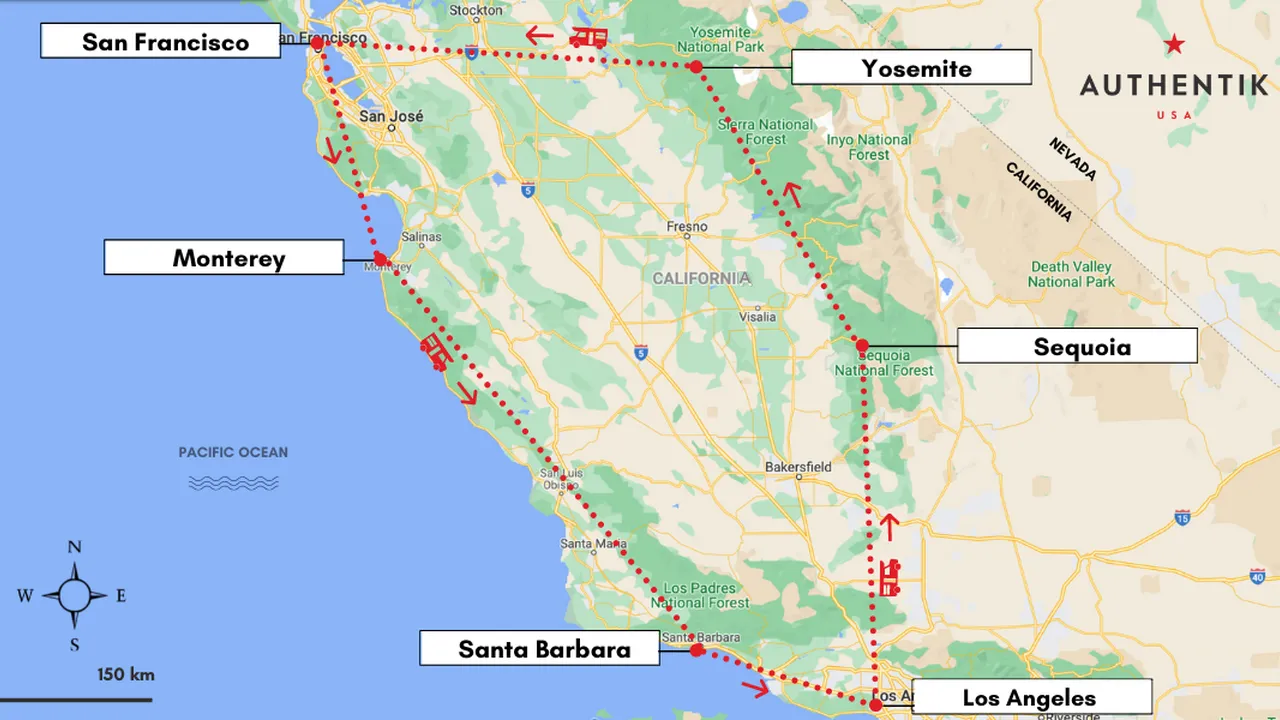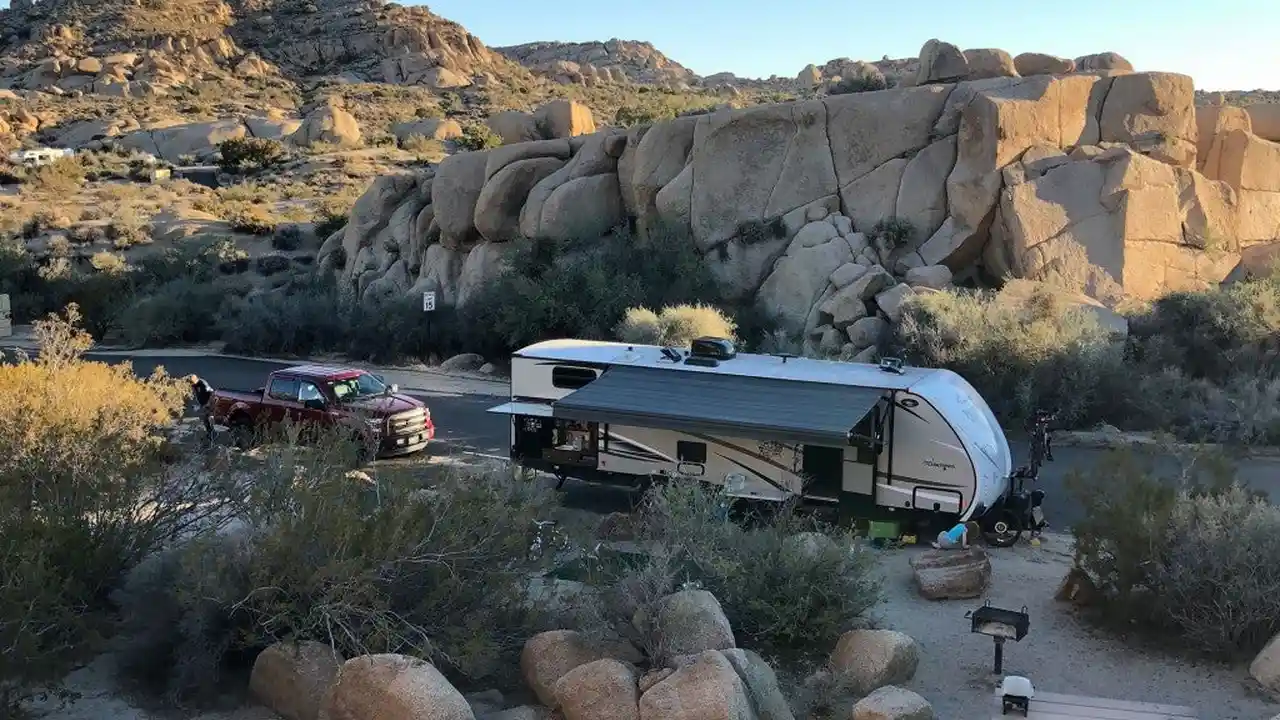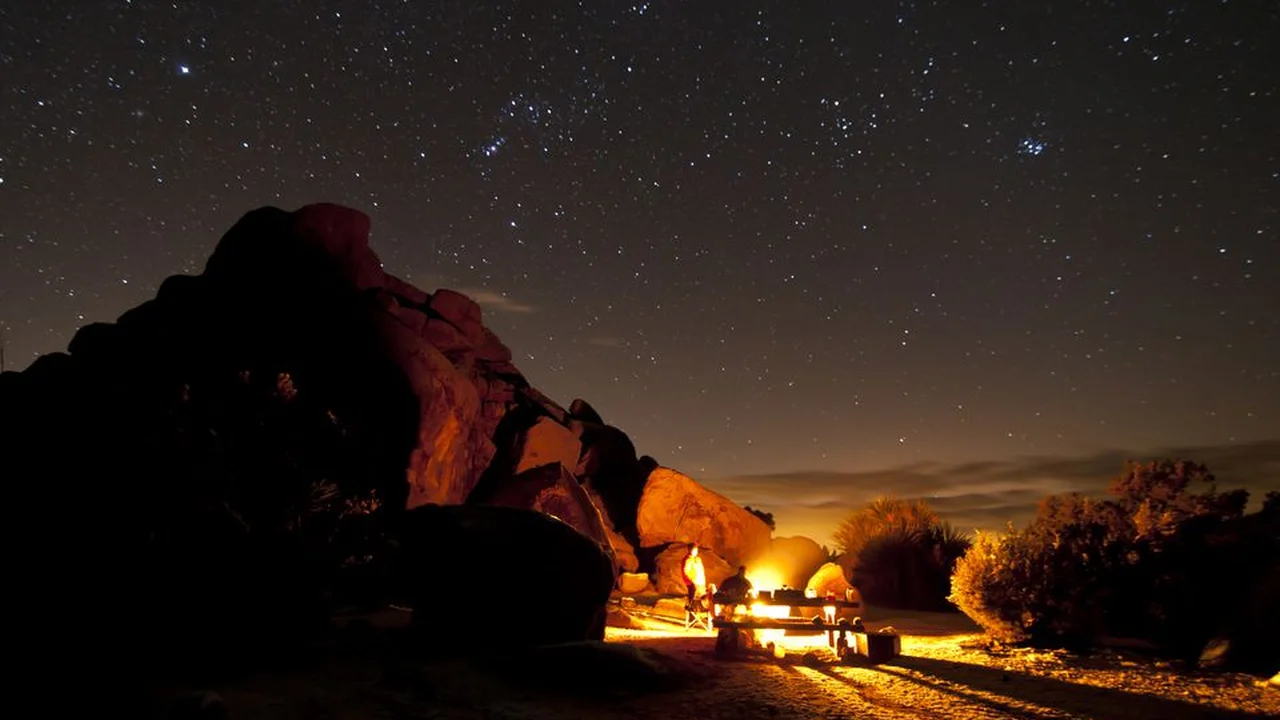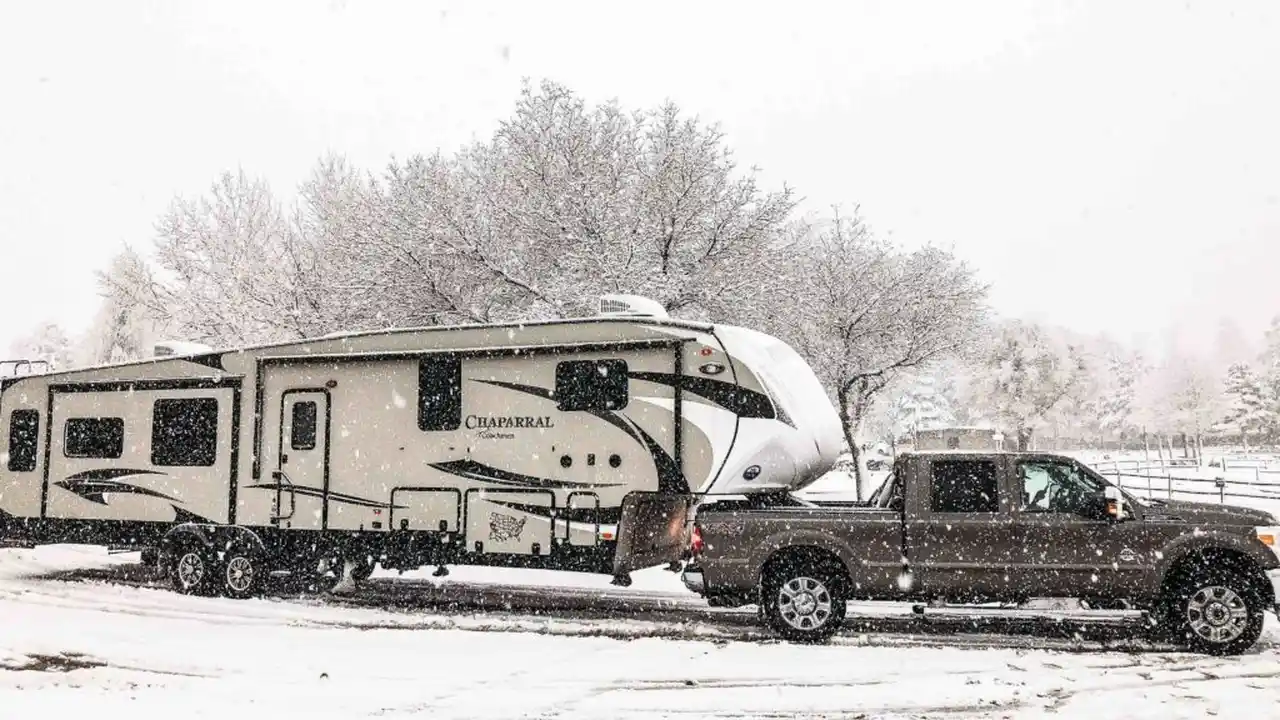7 Must-See Attractions on a California RV Road Trip

RV Travel Planning in California The Golden State Beckons
California, the land of sunshine, stunning coastlines, and diverse landscapes, is an RV traveler's paradise. Planning an RV trip here requires careful consideration to maximize your experience and avoid potential pitfalls. This comprehensive guide dives deep into the world of California RV travel planning, covering everything from route selection and campground reservations to essential gear and unexpected challenges. Prepare to embark on an unforgettable adventure!
Essential RV Gear for California Adventures Must-Have Items
Before you hit the road, ensure your RV is equipped with the necessary gear for a safe and comfortable journey. This goes beyond the basics and delves into California-specific needs. Consider the following:
- Portable Generator: Essential for boondocking or when campground power is unreliable. Look for a quiet model with sufficient wattage to power your appliances. We recommend the Honda EU2200i (around $1,100), known for its reliability and low noise. Its use case is providing power for appliances and devices when shore power isn't available. A cheaper alternative is the Champion 3400-Watt Dual Fuel Generator (around $500), which offers more power but is slightly louder.
- Water Filtration System: California's water quality can vary significantly. A good filtration system ensures safe drinking water. The Clearsource RV Water Filter System (around $300) is a popular choice, offering multi-stage filtration. Its use case is removing sediment, chlorine, and other contaminants from your water supply. A simpler option is the Camco TastePURE RV Water Filter (around $20), but it provides less comprehensive filtration.
- Sewer Hose Support: Prevent kinks and ensure proper drainage with a sewer hose support. The Camco Sidewinder RV Sewer Hose Support (around $40) is a durable and adjustable option. Its use case is preventing sewer hose sagging and promoting efficient waste drainage. A budget-friendly alternative is using rocks or wood to prop up the hose, but this is less reliable.
- Leveling Blocks: Uneven campsites are common. Leveling blocks ensure your RV is stable and comfortable. The Andersen Levelers (around $120) are a popular choice, offering precise leveling. Their use case is leveling your RV on uneven terrain. A cheaper option is using wood blocks, but they require more effort and accuracy.
- Tire Pressure Monitoring System (TPMS): Monitor your tire pressure and temperature to prevent blowouts, especially crucial during long drives in hot weather. The TireMinder TM-77 TPMS (around $300) is a highly regarded system. Its use case is providing real-time tire pressure and temperature data to prevent tire-related issues. A less expensive option is manually checking your tire pressure before each drive, but this is less convenient and doesn't provide real-time alerts.
- California Road Atlas and GPS: While GPS is helpful, a physical road atlas is essential for areas with poor cell service. The Rand McNally Road Atlas (around $20) is a classic choice. Its use case is providing offline navigation in areas with limited or no cell service. A GPS unit like the Garmin RV 890 (around $500) is also recommended for RV-specific routing.
- First Aid Kit: A well-stocked first aid kit is a must-have for any road trip. Include essentials like bandages, antiseptic wipes, pain relievers, and any personal medications. Consider a pre-made kit like the Adventure Medical Kits Ultralight/Watertight Medical Kit (around $50). Its use case is providing first aid supplies for minor injuries and illnesses. Customize it with any specific medications or needs.
- Emergency Roadside Kit: Be prepared for unexpected breakdowns with a roadside kit containing jumper cables, a flashlight, a warning triangle, and basic tools. The AAA 42-Piece Roadside Emergency Kit (around $40) is a good starting point. Its use case is providing tools and supplies for basic roadside repairs and emergencies.
- Camp Chairs and Table: Comfortable seating and a table are essential for enjoying your campsite. The GCI Outdoor RoadTrip Rocker (around $70) is a comfortable and portable chair. Its use case is providing comfortable seating at your campsite. A folding table like the ALPS Mountaineering Camp Table (around $60) provides a convenient surface for meals and activities.
California RV Route Planning Discovering Iconic Destinations
California offers a plethora of RV routes, each with its unique charm and attractions. Here are some popular options:
- Pacific Coast Highway (Highway 1): A classic California road trip, offering breathtaking ocean views and charming coastal towns. Consider breaking this trip into smaller segments due to its length and winding roads. Popular stops include Big Sur, Monterey, and Santa Barbara.
- Yosemite National Park Loop: Explore the majestic granite cliffs and waterfalls of Yosemite. Reservations are often required, especially during peak season. Consider staying at Yosemite Valley RV Campground or Upper Pines Campground.
- Death Valley National Park Adventure: Experience the extreme landscapes of Death Valley, the hottest, driest, and lowest national park. Be prepared for extreme temperatures and bring plenty of water. Furnace Creek Campground is a popular option.
- Redwood National and State Parks Exploration: Marvel at the towering redwood trees in Northern California. Consider hiking the Lady Bird Johnson Grove Trail or driving the Avenue of the Giants. Jedediah Smith Redwoods State Park offers excellent camping.
- Joshua Tree National Park Getaway: Discover the unique desert landscape of Joshua Tree, known for its iconic Joshua trees and stunning rock formations. Black Rock Campground and Jumbo Rocks Campground are popular choices.
California RV Campground Reservations Securing Your Spot
Campground reservations are crucial, especially during peak season (summer and holidays). Popular campgrounds can book up months in advance. Here's how to secure your spot:
- ReserveCalifornia: This website manages reservations for California State Parks. Create an account and browse available campgrounds. Be prepared to book well in advance, especially for popular locations.
- Recreation.gov: This website manages reservations for National Parks and National Forests. Similar to ReserveCalifornia, create an account and search for campgrounds.
- Private Campgrounds: Websites like KOA and Good Sam list private campgrounds throughout California. These campgrounds often offer more amenities than public campgrounds, but they may also be more expensive.
- Boondocking: Dispersed camping (boondocking) is allowed in some areas of National Forests and BLM (Bureau of Land Management) land. Check local regulations and be prepared to be self-sufficient. Apps like Campendium and FreeRoam can help you find boondocking locations.
California RV Rental Options Finding the Perfect RV
If you don't own an RV, renting is a great way to experience the RV lifestyle. Several rental companies offer a wide variety of RVs to suit different needs and budgets.
- Cruise America: A popular rental company with locations throughout California. They offer a variety of RV sizes, including Class C RVs and truck campers. Prices vary depending on the size of the RV and the time of year. Expect to pay around $150-$300 per night.
- RVshare: A peer-to-peer RV rental marketplace, similar to Airbnb. You can find a wide variety of RVs listed by private owners. Prices are often more competitive than traditional rental companies. Do thorough research on the owners and read reviews carefully.
- Outdoorsy: Another peer-to-peer RV rental marketplace. They offer a similar selection of RVs as RVshare. Both platforms offer insurance and roadside assistance.
- El Monte RV: A large RV rental company with a wide selection of RVs, including Class A RVs, Class C RVs, and travel trailers. They have several locations in California. Their prices are generally higher than Cruise America.
California RV Insurance Coverage Protecting Your Investment
RV insurance is essential to protect your investment and provide financial security in case of an accident. Consider the following types of coverage:
- Liability Coverage: Covers damages and injuries you cause to others in an accident. This is typically required by law.
- Collision Coverage: Covers damage to your RV if you collide with another vehicle or object.
- Comprehensive Coverage: Covers damage to your RV from other causes, such as theft, vandalism, fire, and natural disasters.
- Uninsured/Underinsured Motorist Coverage: Covers your injuries and damages if you are hit by an uninsured or underinsured driver.
- Roadside Assistance: Provides assistance if your RV breaks down on the road.
- Personal Property Coverage: Covers your personal belongings inside the RV.
Compare quotes from several insurance companies to find the best coverage at the best price. Consider companies like Progressive, Good Sam Insurance Agency, and Geico.
California RV Maintenance Tips Keeping Your RV in Top Shape
Regular maintenance is crucial to keep your RV running smoothly and prevent costly repairs. Here are some essential maintenance tips:
- Check Tire Pressure Regularly: Maintain proper tire pressure to improve fuel efficiency and prevent blowouts.
- Inspect Brakes: Have your brakes inspected regularly by a qualified mechanic.
- Change Oil and Filters: Follow the manufacturer's recommendations for oil and filter changes.
- Inspect Roof Seals: Check the roof seals for cracks and leaks. Repair any damage promptly.
- Winterize Your RV: If you plan to store your RV during the winter, properly winterize it to prevent damage from freezing temperatures.
- Clean and Inspect Appliances: Regularly clean and inspect your appliances, such as your refrigerator, stove, and water heater.
- Lubricate Moving Parts: Lubricate hinges, locks, and other moving parts to prevent corrosion and ensure smooth operation.
- Check Batteries: Regularly check your batteries and keep them charged.
California RV Budgeting Planning for Expenses
RV travel can be expensive, so it's important to create a budget before you hit the road. Consider the following expenses:
- Fuel: Fuel costs can be significant, especially for long trips. Calculate your fuel consumption based on your RV's fuel efficiency and the distance you plan to travel.
- Campground Fees: Campground fees vary depending on the location and amenities. Expect to pay anywhere from $20 to $100 per night.
- Food: You can save money by cooking your own meals in your RV. Plan your meals in advance and shop for groceries before you leave.
- Activities: Factor in the cost of activities, such as entrance fees to national parks, guided tours, and entertainment.
- Maintenance and Repairs: Set aside a budget for unexpected maintenance and repairs.
- Insurance: Factor in your RV insurance costs.
- Emergency Fund: It's always a good idea to have an emergency fund for unexpected expenses.
California RV Etiquette Being a Respectful RVer
Following RV etiquette ensures a pleasant experience for everyone. Here are some important guidelines:
- Respect Quiet Hours: Observe quiet hours at campgrounds.
- Clean Up After Yourself: Leave your campsite clean and tidy.
- Dispose of Waste Properly: Dispose of waste in designated receptacles.
- Be Mindful of Your Generator: Use your generator sparingly and only during designated hours.
- Respect Wildlife: Observe wildlife from a safe distance and never feed them.
- Be Considerate of Other Campers: Be mindful of your noise level and avoid blocking access to other campsites.
- Follow Campground Rules: Adhere to all campground rules and regulations.
California RV Safety Tips Staying Safe on the Road
Safety is paramount when traveling in an RV. Here are some essential safety tips:
- Buckle Up: Always wear your seatbelt while driving.
- Avoid Distracted Driving: Avoid distractions, such as texting or talking on the phone.
- Drive Defensively: Be aware of your surroundings and drive defensively.
- Be Aware of Your RV's Size: Be mindful of your RV's height and width when navigating narrow roads and bridges.
- Check Weather Conditions: Check the weather forecast before you leave and be prepared for changing conditions.
- Carry Emergency Supplies: Carry emergency supplies, such as a first aid kit, a flashlight, and a warning triangle.
- Plan Your Route: Plan your route in advance and be aware of potential hazards.
- Never Drink and Drive: Never drink and drive.
California RV Boondocking Tips Embrace Off-Grid Living
Boondocking, or dispersed camping, allows you to camp for free on public lands. Here are some tips for successful boondocking:
- Find Legal Locations: Research and identify legal boondocking locations. Apps like Campendium and FreeRoam can help.
- Be Self-Sufficient: Be prepared to be self-sufficient with water, power, and waste disposal.
- Conserve Water: Conserve water by taking short showers and using water-saving devices.
- Use Solar Power: Consider using solar panels to generate electricity. The Renogy 100 Watt 12 Volt Solar Panel (around $120) is a popular option. Its use case is providing renewable energy for powering appliances and charging batteries. A more powerful option is the Go Power! 190 Watt Solar Kit (around $400), but it's more expensive.
- Pack Out All Trash: Pack out all trash and leave no trace.
- Be Aware of Wildlife: Be aware of wildlife and take precautions to avoid encounters.
- Tell Someone Your Plans: Tell someone your plans and expected return date.
California RV Community Joining the RV Family
The RV community is a welcoming and supportive group of people. Here are some ways to connect with other RVers:
- RV Forums: Online forums like RV.net and iRV2 offer a wealth of information and a place to connect with other RVers.
- RV Clubs: RV clubs like Good Sam and Escapees offer discounts, resources, and social events.
- RV Rallies: RV rallies are gatherings of RVers where you can learn new skills, share experiences, and make new friends.
- Social Media Groups: Join RV-related social media groups on Facebook and other platforms.
California RV Travel with Pets Ensuring a Pawsome Trip
Traveling with pets requires extra planning. Here are some tips for a successful RV trip with your furry friends:
- Ensure Pet-Friendly Campgrounds: Verify that campgrounds are pet-friendly and have designated pet areas.
- Secure Your Pets: Secure your pets while driving using a crate or harness.
- Bring Food and Water: Bring plenty of food and water for your pets.
- Pack Pet Supplies: Pack pet supplies, such as leashes, bowls, toys, and waste bags.
- Protect From Extreme Temperatures: Protect your pets from extreme temperatures. Never leave them unattended in a hot RV.
- Know Emergency Vet Locations: Identify emergency vet locations along your route.
- Consider Pet Insurance: Consider pet insurance to cover unexpected vet bills. Companies like Embrace and Trupanion offer comprehensive pet insurance plans. Embrace's average monthly premium is around $40, while Trupanion's is around $60. The use case is covering unexpected vet bills due to illness or injury. A cheaper alternative is a pet savings account, but it requires more discipline and may not cover all costs.
California RV Challenges Overcoming Obstacles
RV travel isn't always smooth sailing. Be prepared for potential challenges, such as:
- Mechanical Issues: RVs can experience mechanical issues. Carry basic tools and know how to perform basic repairs.
- Weather Delays: Weather can impact your travel plans. Be prepared to adjust your itinerary if necessary.
- Crowded Campgrounds: Finding available campsites can be challenging, especially during peak season. Book reservations well in advance.
- Limited Cell Service: Cell service can be limited in remote areas. Carry a satellite phone or a personal locator beacon for emergencies. The Garmin inReach Mini 2 (around $400 plus subscription) is a popular satellite communicator. Its use case is providing communication and SOS capabilities in areas with no cell service. A cheaper option is a personal locator beacon (PLB), but it only provides SOS functionality.
- Unexpected Expenses: Unexpected expenses can arise. Have an emergency fund to cover unforeseen costs.
California RV Resources Helpful Websites and Apps
Numerous resources can help you plan and execute your California RV trip. Here are some helpful websites and apps:
- ReserveCalifornia: For booking California State Park campgrounds.
- Recreation.gov: For booking National Park and National Forest campgrounds.
- KOA: For finding and booking private campgrounds.
- Good Sam: For finding and booking private campgrounds and accessing RV resources.
- Campendium: For finding campgrounds, boondocking locations, and RV services.
- FreeRoam: For finding boondocking locations and RV services.
- Allstays: For finding campgrounds, RV services, and points of interest.
- GasBuddy: For finding the cheapest gas prices.
- WeatherBug: For checking the weather forecast.
:max_bytes(150000):strip_icc()/277019-baked-pork-chops-with-cream-of-mushroom-soup-DDMFS-beauty-4x3-BG-7505-5762b731cf30447d9cbbbbbf387beafa.jpg)






